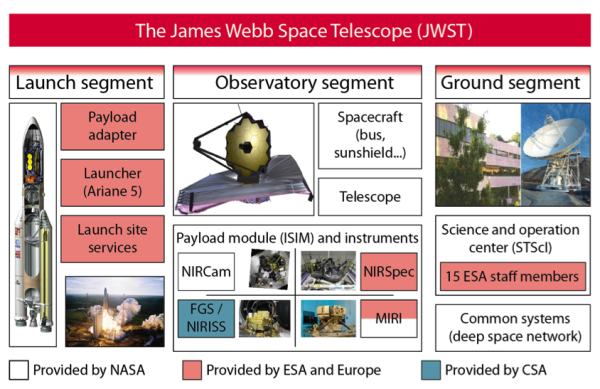Europe's Contributions to the JWST Mission
Since 1996, ESA and NASA, along with the Canadian Space Agency, have collaborated on designing and constructing the James Webb Space Telescope (JWST), widely considered as a follow-up mission to the hugely successful Hubble Space Telescope (HST).
ESA's participation in the JWST mission was formally approved by the ESA Science Programme Committee in 2003. The four major European contributions to the mission are formalised in the Memorandum of Understanding on JWST signed by NASA and ESA in 2007. These contributions are:
- provision of the NIRSpec instrument;
- provision of the Optical System of the MIRI instrument through special funding from the ESA Member States;
- provision of the Ariane 5 launcher and all launch services;
- provision of staff to support mission operations.
In return for the European contributions, ESA gains full partnership in JWST and secures full access to the observatory for astronomers from ESA Member States, on identical terms to those of today on HST. European scientists will be represented on all advisory bodies of the project and will be able to win observing time on JWST through a peer review process, with an expectation of a minimum ESA share of 15% of the total JWST observing time. ESA will provide 15 astronomers to the JWST science and operations centre (SOC) for the duration of the mission. The SOC will be at the Space Telescope Science Institute (STScI) in Baltimore, USA, and it is responsible for both the technical and scientific operations of the observatory.
 |
|
Diagram showing the main elements of the JWST mission, with the contributions of ESA and Europe highlighted in pink. Credit: ESA |

